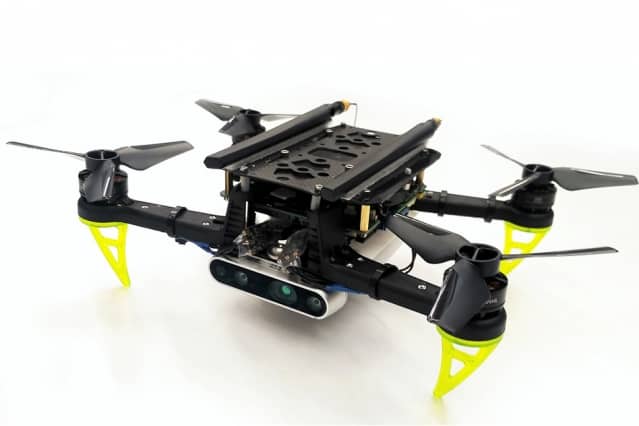Clik here to view.

MIT researchers have developed “FASTER”, a trajectory-planning model that enables drones to navigate previously uncharted trajectories at speed.
Operating safely through previously unexplored areas, at high speed, is a notoriously difficult task for autonomous unmanned aerial vehicles (UAVs). Cautious when navigating the unknown, they creep forward, frequently mapping unfamiliar areas before proceeding, to prevent crashing into undetected objects. This slowdown isn’t ideal for UAVs undertaking time-sensitive missions, such as search-and-rescue through dense forests.
The “FASTER” model estimates the quickest possible path from a starting point to a destination point across all areas the drone can and can’t see, with no regard for safety. As the drone flies, the model continuously logs collision-free “back-up” paths that slightly deviate from the initial fast flight path. When the drone is unsure about a particular area, it detours down the back-up path and re-plans its path. The drone can thus cruise at high speeds along the quickest trajectory while occasionally slowing down slightly to ensure safety.
“We always want to execute the fastest path, but we don’t always know it’s safe. If, as we move along this fastest path, we discover there’s a problem, we need to have a backup plan,” says Jesus Tordesillas, a graduate student in the Department of Aeronautics and Astronautics (AeroAstro) and first author on a paper describing the model being presented at next month’s International Conference on Intelligent Robots and Systems. “We obtain a higher velocity trajectory that may not be safe and a slow-velocity trajectory that’s completely safe. The two paths are stitched together at first, but then one deviates for performance and the other for safety.”
The paper’s other co-author is Brett T. Lopez, a former PhD student in AeroAstro and now a postdoc at NASA’s Jet Propulsion Laboratory.
In forest simulations, where a virtual drone navigates around cylinders representing trees, FASTER-powered drones safely completed flight paths about two times quicker than traditional models. In real-life tests, FASTER-powered drones manoeuvring around cardboard boxes in a large room achieved speeds of 7.8 meters per second. This is pushing limits for how fast the drones can fly, based on weight and reaction times, the researchers say.
“That’s about as fast as you can go,” says co-author Jonathan How, the Richard Cockburn Maclaurin Professor of Aeronautics and Astronautics. “If you were standing in a room with a drone flying 7 to 8 meters per second in it, you’d probably take a step back.”
A potential application for FASTER, developed with support from the U.S. Department of Defense, could be improving search-and-rescue missions in forest environments, which present many planning and navigational challenges for autonomous drones. “But the unknown area doesn’t have to be forest,” explains Jonathan How, “It could be any area where you don’t know what’s coming, and it matters how quickly you acquire that knowledge. The main motivation is building more agile drones.”
The post Trajectory-Planning Model Enables Safe UAV Flight at Speed appeared first on Unmanned Systems Technology.
